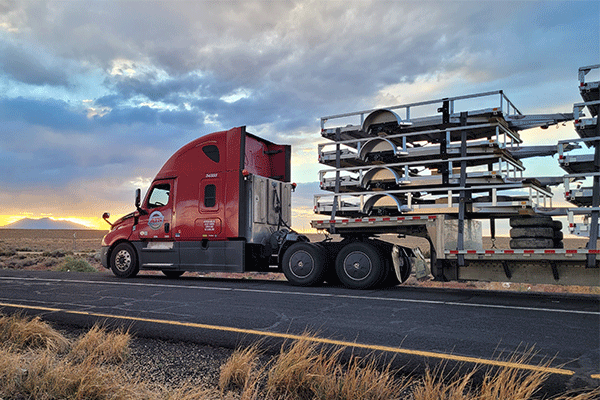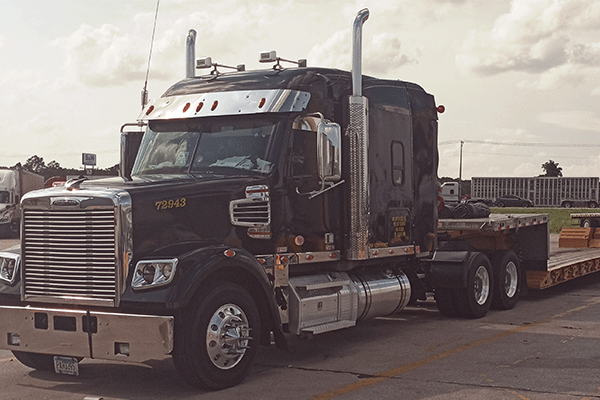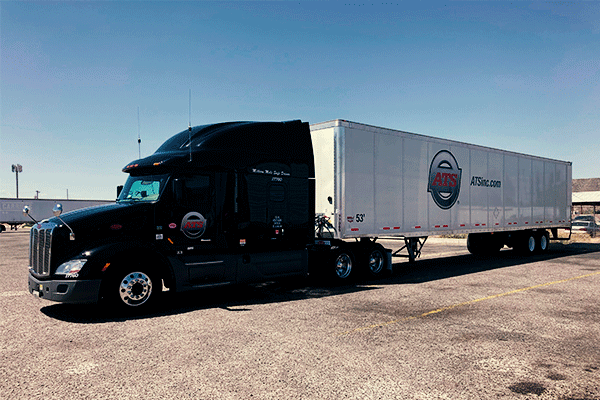
After a hard-hitting few months, sometimes it’s nice to have an off-season. A period of time dedicated to taking a step back, evaluating past performances and planning for the future.
It’s during these spurts of solitude that some of our brightest ideas shine through.
Tom Brady decided to join the Tampa Bay Buccaneers during an off-season. And, although the Bucs’ — statistically speaking — are one of the worst franchises in the history of American sports, this ended up being a brilliant decision.
Not only did the Lombardi trophy return to Tampa for the first time since 2003, but the Buccaneers now hold the only home Super Bowl victory in NFL history. Wowza.
You might not be aiming to win a Super Bowl, but that doesn’t make the goals you have for your upcoming peak season any less lofty.
That said, now is the time to begin planning. But where should you start? What’s important to prioritize? And what can you do now to make your supply chain smoother when things pick up?
These are all valid questions, and today, we’ll answer them.
Here at ATS, we’ve been working with peak season shippers with these same concerns since 1955. During this time we’ve been able to help these companies utilize their downtime in a way that prepares them for the hussle of upcoming bustle.
By the end of this article, you’ll understand how to make the most of the time you have now by doing things that will pay off when it’s eventually time for the rubber to meet the road.
Make your peak season shipping process a bit smoother by doing the following five things during your off-season:
- Evaluate your current transportation network.
- Work to expedite your loading processes.
- Put systems in place to negate potential communication issues.
- Plan for rate spikes where necessary.
- Increase your knowledge of key topics.
1. Evaluate Your Network of Transportation Providers
Every year, as your demand for truck capacity falters to match your outbound freight needs, the time for comprehensive evaluation begins.
Take stock of what went right and what went wrong during your last surge period. Reflect on the transportation wins and losses that happened throughout your latest peak season.
Did the carriers in your network rise to the occasion? Did any of them leave you hanging? How well did your transportation providers meet key performance indicators (KPIs)?
With more than 700,000 trucking companies and 17,000 freight brokers in the United States, there are plenty of unreliable providers. As such, tracking the quality of your current carriers — and weighing their performance during your non-busy seasons — is important to ensure your network is of the highest quality.
Use these key performance indicators to measure each of your carrier’s service quality:
- Tender acceptance rates
- On-time pick-up ratios
- On-time delivery ratios
- Successful delivery ratios
More than anything else, relationships matter in the transportation industry. As such, the relationships you hold with tried and true providers should be prioritized and trusted.
That said, there’s always room for improvement and your off-season is a great time to add good companies to your network. Sure, you might have a solid network of core providers handling the majority of your freight, but having some competent backup options to utilize in times of urgency is also important.
Fine-tuning your network means that you’re continually looking to swap underperforming carriers with those that will come through for you. To do this, use your much-deserved downtime to add carriers that have good track records, long histories of success and proven competence in the service offerings you need.

2. Work to Expedite Your Loading Times
Before the digital age, shippers had the exclusive advantage of grading the carriers they used on performance and reliability. Keeping tabs on past and current transportation providers helps shippers promote a quality, and safe, supply chain.
Today, using online technologies, trucking companies can grade shippers as well. And, shippers with delayed loading and offloading processes are sometimes flagged for these qualities on transportation databases.
Since truckers are only allowed to be actively on-duty for 14 hours within a 24-hour period, prolonged loading times can be highly damaging to their clocks. As such, shippers that consistently boast extensive loading times — of over two hours — are far less attractive to truck drivers looking to maximize their hours of service.
This can make it more difficult for these companies to find a truck at affordable price points as the willingness of local truckers rests below par.
If you’ve ever paid a detention fee due to an overly long loading timeframe, now is your opportunity to re-vamp your processes.
Four ways to expedite your loading process, and save money, during your next busy season are:
- Expand the size and capacity of your loading areas
- Make loading your freight more trucker friendly
- Develop systems for product staging
- Consider adding part-time workers
Let’s talk a bit about each of them.
#1 Expand the Size and Capacity of Your Loading Areas
For many shippers, truck loading inefficiencies stem from the total amount of loading area they have to work with. It can be difficult for yard/dock workers and truckers to maneuver machinery like cranes, forklifts, trucks and trailers without enough room to operate.
To avoid the damage of costly delays and extended loading periods, consider expanding the amount of space you allow for loading and unloading trucks.
Doing so will also increase the total number of trailers you can have on hand at one time, thereby expanding your ability to utilize drop trailers and FCFS transportation scheduling.
#2 Make Loading Your Freight More Trucker-Friendly
Truck drivers like freight that makes their jobs easier rather than more difficult. The shippers that do so develop a positive reputation among area truckers, piquing their interest in interacting with their business going forward.
For example, tarping is a common method for keeping open-deck freight — be it on a flatbed, step-deck or another trailer type — protected from the elements during transit.
That said, tarping freight can be a labor-intensive process and, wherever possible, truckers prefer to forgo freight with these requirements unless properly compensated. As such, the more you can do to make tarping your freight easier for the truckers charged with doing so the better.
To do this, some shippers help drivers throw their tarps to remove this burden from their shoulders. Helping drivers in this way will make picking up your freight all the more desirable the next time you need that trucker’s assistance — potentially decreasing the price you pay.
#3 Develop Systems for Product Staging
Often, loading freight takes longer because locating the appropriate products within your facility is challenging. And, as the volume of freight leaving your doors increases — as it does during your peak seasons — efficiently finding and loading goods only becomes more difficult.
To avoid these issues when things pick back up, begin to develop systems for sorting, storing and staging products while you’re a bit slower. When done correctly, doing so will allow your workers to expeditiously load your freight without costly delays rearing their heads.
#4 Consider Adding Part-Time Workers
Sometimes a couple of extra hands can make all the difference. If you face issues getting freight out the door efficiently during your peak season, consider bringing on some extra help during these periods.
Many shippers find it beneficial to have a few more workers floating around to provide assistance where needed and keep everything on track.
Although the expense tied to adding some part-time help might seem like a deterrent, having some additional workers around may actually save you money by ensuring you avoid unnecessary detention fees and delays.

3. Put Systems in Place to Avoid Potential Communication Issues
With so many moving parts in your transportation supply chain, communication is important to keeping everything on track. Too often, delays occur and money is lost due to miscommunication of expectations and timeframes between shippers and their consignees.
To avoid these issues when it matters — during your busiest time of year — you’ll want to take action now.
If you haven’t already, consider adding asynchronous communication channels to your transportation systems.
This might mean that you have a formalized online system such as a customer portal that’s updated with timeframes for delivery, pick up and in-transit details. Or this could simply take the form of a shared spreadsheet where load details are communicated based on what your customers need.
The more you do to give all stakeholders visibility over where each load is at in the shipping process, the better off you’ll be during your next peak season.
4. Budget For Rate Spikes During Peak Seasons
If your freight shipping schedule is picking up, the same thing is likely happening to other businesses in your industry and area. This influx of demand as your product comes into season will drive up the price of securing a truck to move your freight.
In turn, this price hike could negatively impact your bottom line, especially if you don’t plan for it.
This year though, let’s get the most from your shipping budget by prioritizing:
Lead Time
When it comes to moving freight, time is money. And, as the amount of lead time you give your transportation provider diminishes, so too does their ability to find you a truck at competitive prices.
Avoid unnecessary price increases by giving your carriers — or freight brokers — at least 48-72 hours of notice prior to the moment your shipment needs to load.
Pre-Booking Loads
Trucking companies like to plan their trucks out for days in advance. This helps them keep their assets running from one load to the next and make the most of their hours of service.
Pre-booking your trucks is also a great way to keep your supply chain on track during your peak season. Instead of searching for urgent capacity at the last minute, having your trucks ready and waiting when you need them is advantageous. Working with a great freight broker — that has a wide network of carriers — is a great way to do just that.
Many brokers actually specialize in staging their customer’s trucks so they’re ready on a set schedule. If you’re interested in how a freight broker can help you pre-book your shipments and manage your peak season supply chain consider adding a new one to your supply chain.
Note, lead time and pre-booking your loads are only two ways to make the most of your budget. Adding a bit of flexibility on your pick-up and drop-off timeframes, on your equipment type requirements and on the number of shipments you need to be moved per day, will also help your provider find a truck at more competitive price points.
For example:
Instead of holding to a rigid pick-up time frame of 8 a.m. consider widening your window to 8 a.m.-12 p.m.
Instead of standing by your conviction that a flatbed is the only trailer that can haul your load, trust your provider when they tell you that a 53-foot step-deck will also do the job.
And, should you need 10 loads to go every day, consider shifting your requirement to 50 per week instead. That way, if you move eight loads the first day and 12 the next — because it helps your provider find a price-sensitive solution — you’ll still be on track.

5. Fine-Tune Your Expertise
Here at ATS, we’ve found that education is one of the greatest ways to find success in the transportation industry. The better attune you are to the intricacies of this market — a market that adjusts frequently — the easier success will come.
Just like any professional, your goal is to do your job better than the field but without continually searching for growth opportunities, you’ll fall behind the curve.
That said, there are plenty of opportunities — in the form of conferences and seminars — for logistics managers, like you, to fine-tune their expertise.
Attend some of them. The tips, tricks, tactics and skills you’ll gain by submerging yourself into a community of like-minded individuals with similar goals, and struggles, to yours, will help you greatly when your transportation needs pick up.
Here are some great conferences that provide an opportunity for logistics professionals to hone their craft :
- WERX DX Warehousing Conference (May)
- The American Supply Chain Summit (May)
- Ecommerce Operations Summit (August)
- Gartner Supply Chain Symposium (October)
Even if you can’t attend any seminars or conferences before your peak season hits, the more you understand the intricacies of the transportation industry, the better off you’ll be.
Check out some of the content on our Learning Hub and subscribe to blogs so that you receive updates on all of the educational content published by the experts here at ATS.
Make Your Peak Season Successful
Ironing out your network, working to decrease loading timeframes, continuing your education and getting ahead of communication issues are all crucial to ensuring your next busy season goes smoothly.
Your supply chain matters and your goals shouldn’t have to take a hit due to shoddy partnerships.
The best transportation providers will understand your needs during these peak seasons and work alongside you to make sure they’re met.
Here at ATS, we take pride in our ability to help shippers like you keep their freight moving no matter the season. As such, we’re happy to help you in any way you need as things begin to ramp up.
Request a quote today. We have a transportation expert ready and willing to make your goals their own as we head toward what promises to be your best peak season yet, a Super Bowl championship of your very own.




